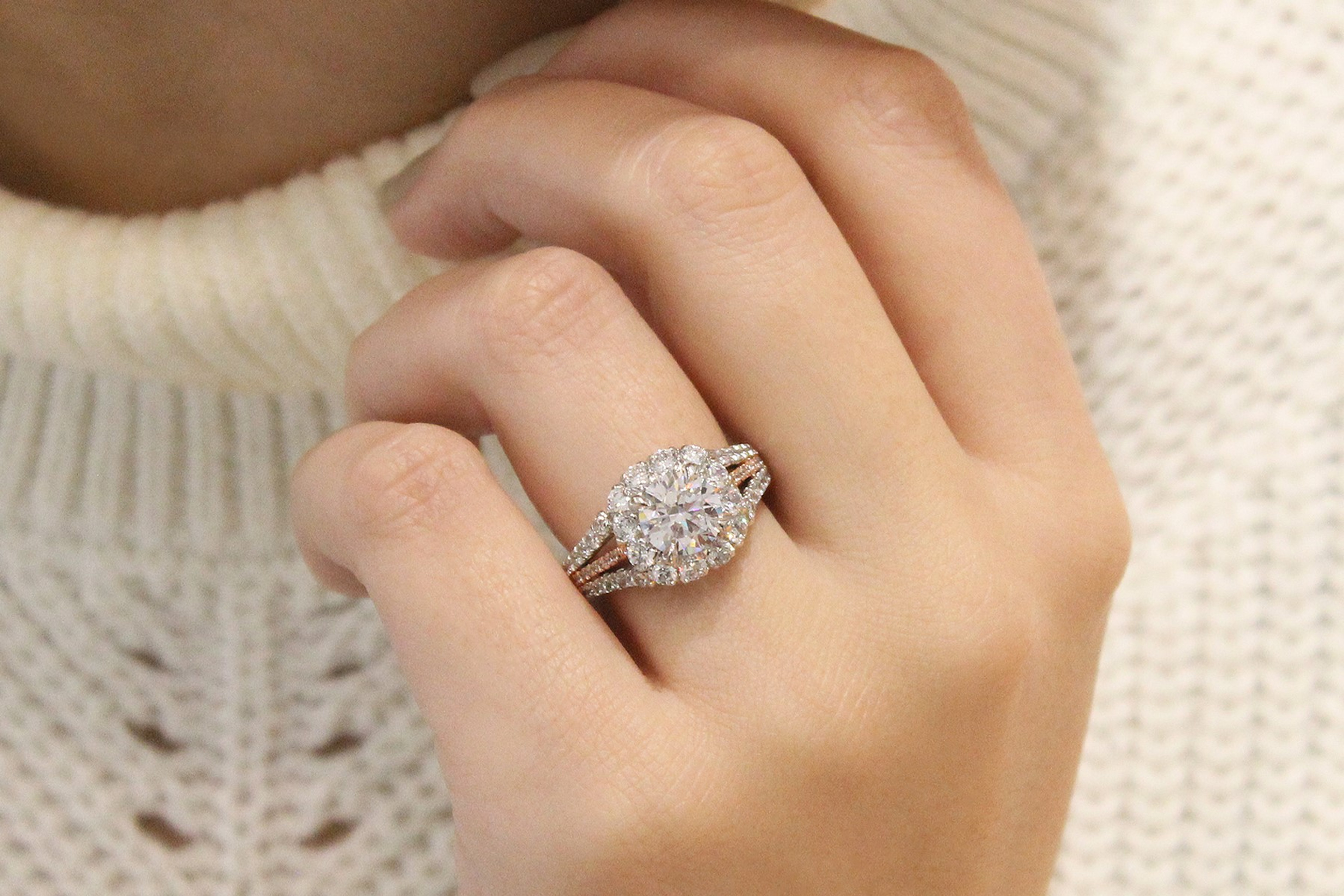Let’s imagine a world in which diamonds aren’t forever, a world in which they were never a girl’s best friend. All that remains in this imagined world is a ring absent the proverbial “rock.”
Why, though, play pretend when such a world was once a reality?
The Egyptians, the Greeks, the Romans, and a plethora of other peoples who preceded us somehow managed to tie the knot without these precious stones. Their engagement rings were no less symbolic for the absence of the diamonds we covet so much today.
So how did humanity go from sporting “rockless” rings to donning big, bright gems in celebration of our unions?
From ancient Egypt to twenty-first century America, we’re taking a trip down memory lane to find out how the modern engagement ring became...well, modern.
Engagement Rings in the Ancient World
Humans mastered the art of finding meaningful ways to commemorate marriage long before we learned how to effectively mine diamonds. The ancient Egyptians are said to have exchanged braided hemp “rings” over 5,000 years ago. These rings’ circular shape signified that the wearers were making an eternal commitment to their partners.
The ancient Greeks, too, are credited with adopting the tradition. They often fashioned raw materials into rings and exchanged them with one another.
Technically speaking, however, scholars have only managed to officially trace the history of the engagement ring as far back as ancient Rome. The Romans left behind several texts—written laws, poems, etc.—which confirm that they exchanged iron rings and often plated these rings with gold.
The Romans would sometimes place lodestones, which are magnetized bits of the mineral magnetite, on these gold-plated ring settings. The lodestones' magnetic properties represented to the Romans the love that bound couples together.
The Origins of the Diamond
Although the Romans occasionally set their rings with stones, diamonds were not among these stones. Even so, they knew of diamonds’ existence, as did the Greeks centuries before them.
So, what stopped these ancient peoples from adorning their rings with diamonds?
A couple of things, actually:
- Mining diamonds is somewhat difficult without modern machinery
- Ancient peoples lacked the necessary technology to properly cut and polish diamonds. Unrefined diamonds aren't exactly as brilliant as Gabriel New York's polished diamonds (or some other prestigious wholesalers').
Still, it would be disingenuous to claim that ancient peoples completely ignored diamonds. Historians have traced diamond mining back to ancient India. The locals “discovered” the precious gemstones around the 4th century BC and soon after began mining them. In fact, the bulk of the world’s diamonds were sourced from India until the 18th century.
Early Indians believed that diamonds bestowed protection unto their wearers. The ancient Greeks would later associate diamonds with invulnerability due to their hardness, referring to them as “αδάμας” (adámas), “or “unconquerable.” In fact, the word “diamond” is derived from this ancient Greek term.
Vena Amoris
We’ve established that ancient peoples at least knew about diamonds, which is a great start to understanding our modern engagement ring tradition. There is, however, another aspect of our tradition that finds its roots in ancient history: the “ring finger.”
So where did this idea of having a specified ring finger come from?
We have the Romans to thank for this tradition. Many historians believe that the practice of wearing engagement rings on the ring finger has its roots in ancient Rome. The Romans believed that there existed a vein in the fourth finger of the left hand which had a direct connection to the heart. This vein was aptly named the “vena amoris,” or “vein of love.”
Of course, today we know the vena amoris to be an entirely fictitious, yet romantic, conception. It still, however, has a nice ring to it, no pun intended.
Diamond Cutting Becomes an Art
As we mentioned before, cutting and polishing diamonds was difficult without decent technology. For this reason, diamonds were not a popular pick for engagement rings in the distant past.
As a matter of fact, diamonds would remain fairly unpopular until the early 14th century. It was around this time that the Venetians tried their hands at cutting diamonds. To be sure, Venetian artisans weren’t the first to attempt cutting diamonds. They did, however, make one of the most notable early efforts.
This early diamond cutting was admittedly crude. Without the proper tools, artisans were relegated to simple polishing. It wasn’t until the 15th century that artisans’ arsenal of tools expanded considerably enough for them to create rudimentary versions of the facets we know and love. Innovations throughout the 16th century further broadened the possibilities. New gem-faceting technology made decent faceting a reality. Cuts such as the baguette cut, table cut, and point cut hit the market.
Next came the brilliant cuts in the 17th century. Though these cuts weren’t as “brilliant” as more modern cuts, like our own designs, they favored sparkle and shine. The demand for diamonds throughout Europe gradually increased and they became a symbol of status.
All in all, the European Renaissance treated diamonds well. It solidified their place as prestigious precious stones and set them on a course for contemporary success.
Coming to America
Surprisingly enough, diamonds didn’t immediately take off in the New World. For a multitude of reasons, they weren’t initially popular in the United States. In truth, Americans only learned to love diamonds in the mid-twentieth century.
It was then that, thanks in part to copywriter Frances Gerety, diamonds truly became forever. Gerety coined the popular phrase “A Diamond Is Forever” while N.W. Ayer, a then-popular advertising agency, decked socialites and other influencers in jewels. Their efforts yielded positive results within just a couple of years: Diamond sales in the United States jumped by a whopping 55 percent.
Today an estimated 75 percent of brides-to-be in the United States sport diamond engagement rings. Not only that, but the United States is now the world’s largest market for diamond jewelry, and it will likely hold that crown for a while longer.
Partake in the Tradition
Because, by virtue of wearing it to celebrate your bond with your partner, you’re participating in the detailed history of the engagement ring, yours may seem like little more than a tiny speck in the grand scheme of things. Your diamond ring, however, is no less meaningful than the countless rings which preceded it.
Your participation is perfectly representative of the fact that, if nothing else is true, love transcends time and space itself. That is to say, love, like diamonds, is forever, so go ahead and celebrate with a stone that’s as precious as love itself. respected, age-old tradition.
Have a question? We can help!
Gage Diamonds is Chicago's premier jewelry showroom and online retailer of engagement rings, wedding bands, and fine jewelry. We offer a selection of dazzling handpicked diamonds, including certified natural diamonds.
We’re committed to helping you find the ring of your dreams. For inspiration, browse our website or set up an appointment with a member of our trusted staff at our in-person showroom.
We offer no-credit-needed financing – feel free to apply and get your approval within 24 hours!
Pay over time, because love shouldn’t wait.

